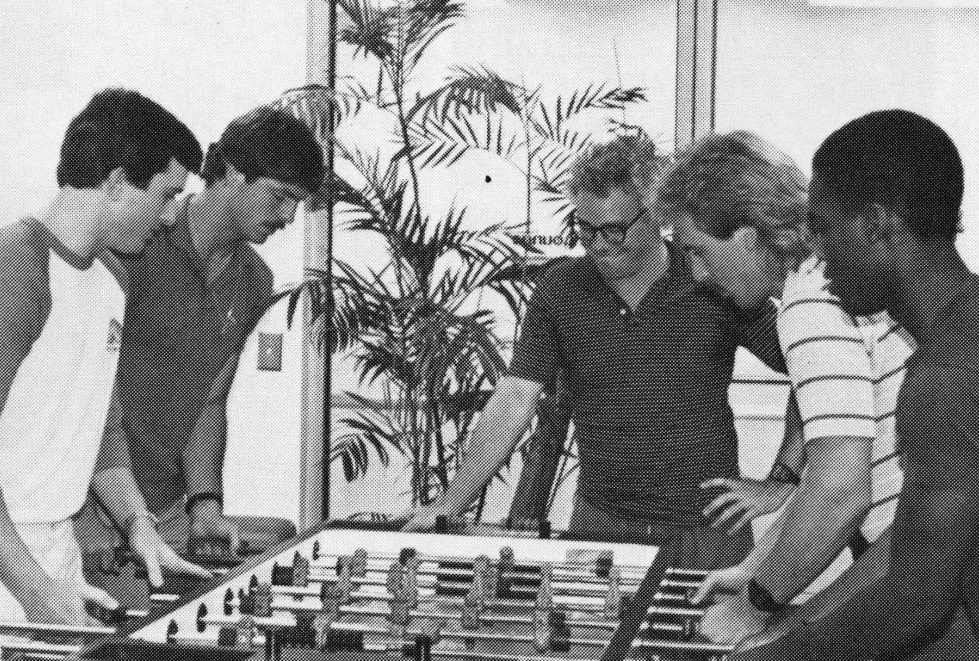Learning the language of medicine: Baylor’s medical terminology, anatomy and physiology course
Do you know what poikilocytosis means? How about xanthelasma? Could you spell these terms?
Medical terminology and basic anatomy/physiology may seem like a different language to those who’ve never learned it before. Beyond medical students and physicians, there are many people who would benefit from learning the basics.
That’s exactly the goal of the Annual Medical Terminology and Anatomy/Physiology Course at Baylor College of Medicine.

So far, more than 4,000 people have taken the course, about 100 people every year. The course is comprised of nine sessions, broken into two parts: Medical terminology, which includes the spelling, pronunciation, meaning and use of medical terms, and the anatomy-physiology portion, which consists of learning basic anatomy and physiology concepts.
Gaining a basic understanding of medical terminology, basic anatomy and physiology is useful for anyone who works in the medical field, such as medical secretaries, receptionists, lab and records technicians and coders, nurse assistants, and any kind of healthcare provider. It’s also useful for students who are interested in attending medical school, attorneys who work with medical malpractice, and any individuals who are interested in acquiring a basic understanding of medical concepts.
At the end of the program, certificates are awarded to those who successfully complete it.
Celebrating 40 years
This course, which will soon celebrate its 40th year, is the longest-running community education course at Baylor College of Medicine.
It all began in 1972, Dr. Joseph Merrill, the executive vice president of Baylor College of Medicine at the time, asked Dr. Robert Roush, associate professor, geriatrics section, to collaborate with Hedy Pustejovsky, who was president of the American Association of Medical Assistants’ chapter in Houston.
The task? Create a course on medical terminology for all medical assistants in Houston.
It seemed like a pretty large undertaking, but they worked together and created the course. Originally, Roush recalls, the purpose was to help individuals who kept medical records in doctor’s offices so they could type and spell the words correctly – especially since they didn’t have spell-check in those days.
One of the students in that first run of the course was Nancy Akery. She provided feedback on how to improve the course so participants could all be on the same page, regardless of their backgrounds in medicine. Ultimately, Roush asked her to teach the course, along with Dr. Cassius Bordelon, who taught the functions of the human body in a clear, easy-to-understand way.
Students would receive instruction in anatomy and physiology and then they were given the opportunity to go to the labs and understand what they’d learned in a more concrete way – they could see a cadaver, if they chose to!
Although the course no longer includes viewing of cadavers, the instructors work with participants to understand the origins of medical terminology in a way that makes it relevant to their everyday lives.
Learning the language
Today, the course instructors include Nancy Akery, Dr. Steven Chua, currently a radiology resident at Baylor College of Medicine, and Dr. Thomas David Johnson, also from Baylor.
Roush says the course is no longer just for medical assistants; although this group still comprises the largest percentage of people who’ve taken the course, there are many reasons why individuals benefit from this course. Other examples include foreign medical graduates who want to improve their English skills or patients who want to gain a better understanding of health literacy.
“It makes sense that learning the language of medicine would help you increase your level of health literacy,” Roush said.
The notion of health literacy will be more of a focus in the upcoming course, particularly aimed toward those who are caretakers for older adults.
This year, the course runs from Sept. 17-Nov. 12 and takes place on Tuesday evenings, 6-8:30 p.m. See additional details on this course and register here.
Have you taken this course in the past? Share your experiences here!
*The following are definitions of the terminology mentioned within this post, including the graphic, in case you’re interested:
- Poikilocytosis: Irregularity in shape of red blood cells
- Xanthelasma: Raised yellowish plaques on the eyelids caused by a lipid disorder
- Vomer: The thin, single flat bone that forms the lower portion of the nasal septum
- Cerumen: Waxy substance secreted by the external ear; earwax
- Hematochezia: Passage of bright, red blood from the rectum
-By Jordan Magaziner




I am in school to become a medical assistant and I was wondering if it would be better to be certified or registered?
Hi Nancy,
You could sit for the exams for both if your school/training and experience qualify you to do so. The CMA and RMA are both designations for qualified medical assistants through different non-profit organizations. The AAMA (American Association of Medical Assistants), has the CMA testing/designation and has been in existence longer than the RMA (AMT) designation. I do believe that the CMA is more stringent in requirements and is more recognizable to most health professionals.
You may want to explore the websites of both organizations to decide which is more applicable to you at this time. I am including links below.
I hope this is helpful and wish you good luck in your endeavors.
http://www.aama-ntl.org/cma-aama-exam
http://www.americanmedtech.org/Certification/MedicalAssistant.aspx
The following link compares all the different options:
http://www.aama-ntl.org/docs/default-source/employers/cma-stands-apart.pdf?sfvrsn=6
Excellent blog post. I absolutely love this site.
Continue tthe good work!
hey I am taking now anatomy and physiology in high school .I wonder if this would help me later then while trying to enroll in a college,between I want to study something in medicine and I have an A IN this class ,so if you could give me some advices please.
Hi Perla,
Thanks for reading the Baylor College of Medicine blog. Please see opportunities in our Center for Educational Outreach: https://www.bcm.edu/education/programs/educational-outreach/career-pathways and learn more about the SMART program for college undergraduates: https://www.bcm.edu/education/schools/graduate-school-of-biomedical-sciences/programs/diversity/smart
Best,
-Nicole